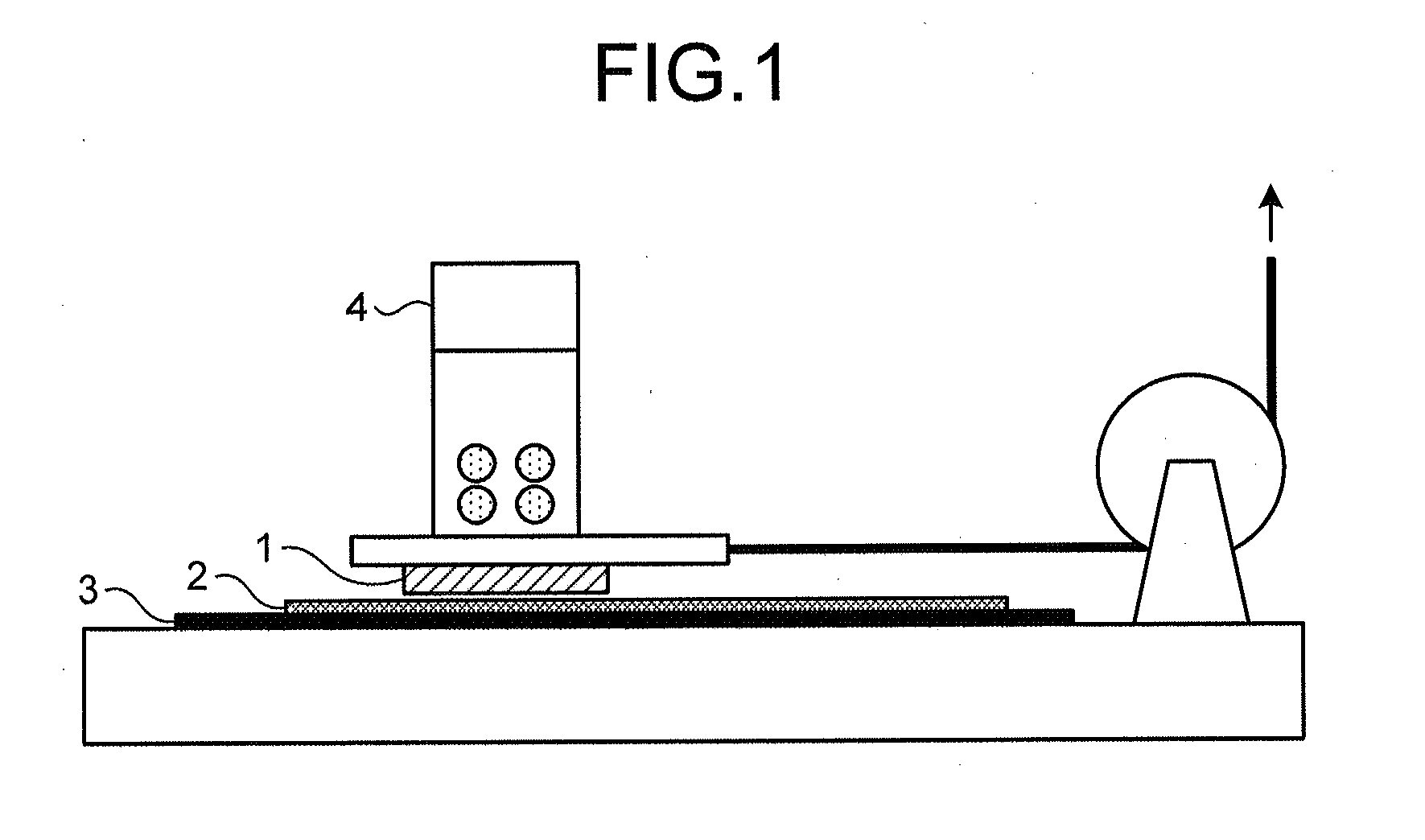Low hydrous soft ophthalmic lens and method for manufacturing the same
a technology of ophthalmology and soft ophthalmology, which is applied in the field of low hydrous soft ophthalmology, can solve the problems of hydrogel material likely to be contaminated, water vaporization from the contact lens, and certain percentage of contact lens wearers to have a stronger dry feeling, so as to reduce or avoid the phenomenon, reduce the risk of the growth of bacteria, and high oxygen permeability
- Summary
- Abstract
- Description
- Claims
- Application Information
AI Technical Summary
Benefits of technology
Problems solved by technology
Method used
Image
Examples
examples
[0219]The present invention will be specifically described below by examples, but the present invention is not limited to these examples.
[0220]Analysis Methods and Evaluation Methods
[0221](1) Water Content
[0222]A test piece shaped in a contact lens form was used. The test piece was immersed into a borate buffer solution and was left at room temperature for 24 hours or more. After that, water on the surface thereof was wiped off with a wiping cloth (“Kimwipe (registered trademark)” manufactured by Nippon Paper Crecia Co., Ltd.), and the mass (Ww) thereof was measured. After that, the test piece was dried in a vacuum dryer at 40° C. for 16 hours, and the mass (Wd) thereof was measured. A water content was determined by the following formula. When the obtained value was less than 1%, the case was determined as the limit of measurement or less and was expressed as “less than 1%.”
Water content (%)=100×(Ww−Wd) / Ww
[0223](2) Wettability
[0224]A test piece shaped in a contact lens form was im...
synthesis examples
[0249]Described are synthesis examples of copolymers subjected to coating in examples. The molecular weights of the copolymers were measured under the following conditions:
(GPC Measurement Conditions)
[0250]Apparatus: Prominence GPC System manufactured by Shimadzu Corporation)
[0251]Pump: LC-20AD
[0252]Autosampler: SIL-20AHT
[0253]Column oven: CTO-20A
[0254]Detector: RID-10A
[0255]Column: GMPWXL (ID 7.8 mm×30 cm, particle size 13 μm) manufactured by Tosoh Corporation
[0256]Solvent: Water / methanol=1 / 1 (with 0.1 N lithium nitrate added)
[0257]Flow rate: 0.5 mL / min
[0258]Measuring time: 30 minutes
[0259]Sample concentration: 0.1% by mass
[0260]Injection amount: 100 μL
[0261]Standard sample: Polyethylene oxide standard sample (0.1 kD to 1258 kD) manufactured by Agilent Technologies
synthesis example 1
[0262]Pure water below indicates water purified through filtration with a reverse osmotic membrane.
[0263]
[0264]To a 500-ml three-necked flask were added N,N-dimethyl acrylamide (59.50 g, 0.600 mol), acrylic acid (21.62 g, 0.300 mol), pure water (325.20 g), a polymerization initiator VA-061 (Wako Pure Chemical Industries, Ltd., 0.1408 g, 0.562 mmol), and 2-mercapto ethanol (43.8 μL, 0.63 mmol), and to the flask were attached a three-way stopcock, a reflux condenser, a thermometer, and a mechanical stirrer. The monomer concentration was 20% by mass. The inside of the three-necked flask was deaerated by a vacuum pump and was substituted with argon three times. After that, the mixture was stirred at 50° C. for 0.5 hours, heated up to 70° C., and stirred for 6.5 hours. After the completion of polymerization, the polymerization reaction solution was condensed to 400 g by an evaporator and poured into 2-propanol / n-hexane=500 mL / 500 mL to be left at rest, and the supernatant was removed thr...
PUM
| Property | Measurement | Unit |
|---|---|---|
| water content | aaaaa | aaaaa |
| temperature | aaaaa | aaaaa |
| elongation at break | aaaaa | aaaaa |
Abstract
Description
Claims
Application Information
 Login to View More
Login to View More - R&D
- Intellectual Property
- Life Sciences
- Materials
- Tech Scout
- Unparalleled Data Quality
- Higher Quality Content
- 60% Fewer Hallucinations
Browse by: Latest US Patents, China's latest patents, Technical Efficacy Thesaurus, Application Domain, Technology Topic, Popular Technical Reports.
© 2025 PatSnap. All rights reserved.Legal|Privacy policy|Modern Slavery Act Transparency Statement|Sitemap|About US| Contact US: help@patsnap.com



